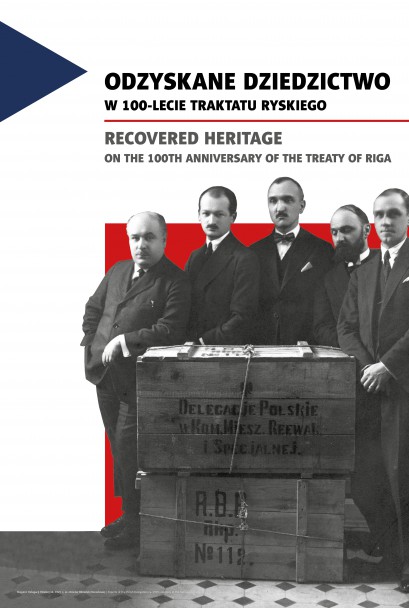

A hundred years ago, the operation of restitution to Poland of many priceless works of art and national mementoes looted by Russia during the partitions began. Among them were also items from the collections of king Stanisław August, which formed part of the furnishings of the Royal Łazienki. Polish cultural property was returned as a result of the Peace of Riga. The exhibition at the Open-Air Gallery at Al. Ujazdowskie avenue is devoted to the peace agreement of 1921.
Following the war fought in the years 1919-1920, on 18 March 1921, Poland, Soviet Russia and Ukraine, signed a peace agreement which became known in history as the Peace of Riga. It regulated many issues, including delimitation of the Polish border in the east, repatriation of citizens and economic and trade affairs. The restitution of cultural property was an extremely important issue. Although the 15-year operation was not fully successful, it was possible to recover a large part of cultural heritage that Russia had been looting since 1772, including the symbols of Polish statehood, national and cultural identity.
Among the items returned to Poland there were the so called Szczerbiec – the ceremonial sword used in coronations of the kings of Poland, the royal tapestry and the heads of Wawel, the work of Jan Matejko "Battle of Grunwald (Tannenberg)", and the paintings by Marcello Bacciarelli and Bernardo Belotto called Canaletto, the chronicles of Wincenty Kadłubek and Jan Długosz, and a statue of prince Józef Poniatowski. The claimed Polish cultural property included also many items of the furnishings of the Royal Łazienki., i.e. from the Palace on the Isle and the White Pavilion. In 1914–1915, when the Russians were fleeing the approaching German front, both buildings saw the looting of the furniture, paintings, sculptures, appliques, chandeliers, clocks and even bronze ferrules of fireplaces and handles in the form of lion heads on the entrance door.
Without the restitution under the Peace of Riga, the Royal Łazienki would not have regained their unique character which they owe to king Stanisław August, who decorated his summer residence in a thoughtful manner.
On the occasion of the 100th anniversary of the signing of the Peace of Riga, ending the Polish-Bolshevik war, an exhibition is on display at the Open-Air Gallery at Al. Ujazdowskie avenue entitled "Recovered Heritage. On the 100th Anniversary of the Treaty of Riga. It features photographs of priceless works of art kept in Polish museums and galleries, including the Royal Łazienki Museum in Warsaw, and recovered pursuant to Article XI of the Peace of Riga.